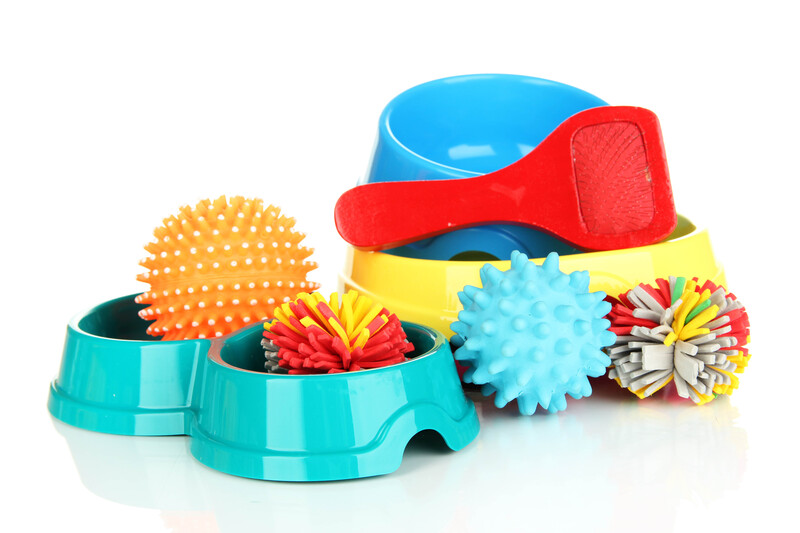Navigate Bed and Mattress Moving with Confidence
Posted on 12/06/2025
Navigate Bed and Mattress Moving with Confidence
Whether you're relocating across town or embarking on a cross-country journey, moving a bed and mattress can be a daunting task. These pieces are among the most important--and cumbersome--items to transport, and doing it right ensures your comfort at your new place. In this comprehensive guide, we'll show you how to navigate bed and mattress moving with confidence, offering step-by-step tips, expert strategies, and handy checklists to make the process seamless and stress-free.
Why Proper Bed and Mattress Moving Matters
Your bed is the centerpiece of your rest and recovery. Moving it without proper precautions can lead to damage, discomfort, and unnecessary expense. Mattresses are surprisingly delicate; improper handling can result in sagging, tears, contamination, or lost warranty. Understanding how to move a bed and mattress safely ensures you maximize their lifespan and protect your investment.

Planning Your Bed and Mattress Move
Assess Your Bed and Mattress
- Size and Type: Are you moving a twin, queen, or king mattress? Do you have a full bed frame or just a platform?
- Age and Condition: Is it worth moving, or is this a good time to replace your mattress?
- Assembly Complexity: Some beds require tools or special knowledge to disassemble.
Measure and Map Your Route
- Doorways and Hallways: Will your bed and mattress fit through every door, hallway, and staircase?
- Transport Vehicle: Does your vehicle accommodate the mattress size with room for safe securing?
Tip: Sketch a simple floor plan, and measure both old and new spaces to prevent surprises on moving day.
Essential Tools and Supplies for Moving Beds and Mattresses
- Mattress Bag or Cover: Prevents dirt, moisture, and tears.
- Moving Blankets or Pads: Protects bed frame and headboard from scratches.
- Cargo Straps or Rope: Secures mattress during transport.
- Screwdriver or Allen Wrench: For disassembling the frame.
- Dolly or Hand Truck: Reduces lifting strain.
- Markers and Ziplock Bags: For labeling and securing hardware.
Step-by-Step Guide to Moving Your Bed and Mattress
1. Disassemble the Bed Frame
- Remove Bedding: Take off sheets, pillows, and blankets. Wash and pack them separately.
- Disassemble Carefully: Use the appropriate tools to unscrew side rails, legs, and headboard. Keep all bolts, screws, and small parts together in a labeled bag.
- Protect Components: Wrap wooden or upholstered pieces in moving blankets or plastic wrap.
2. Prepare the Mattress
- Clean and Air Out: If possible, clean the mattress and let it air out for a few hours.
- Encapsulate: Slide the mattress into a high-quality mattress bag or heavy-duty plastic cover to shield it from dirt and moisture.
3. Maneuver Through Your Home
- Clear Obstacles: Create a clear path from bedroom to exit.
- Team Up: Moving mattresses is often a two-person job. Communication is key--decide who leads and who follows.
- Protect Walls and Flooring: Use moving blankets to prevent dings, scuffs, or scratches.
4. Loading the Mattress and Bed Frame into the Vehicle
- Mattress Orientation: Depending on your vehicle, store the mattress flat (preferable) or on its side. Avoid folding unless designed for folding transport.
- Secure with Straps: Use strong ratchet straps or rope to immobilize the mattress and bed frame, preventing sliding or damage in transit.
- Even Weight Distribution: Balance the load and avoid placing sharp or heavy items atop the mattress.
Pro Tip: If using a truck bed or open trailer, protect the mattress from wind, rain, and debris by tightly securing the mattress bag and covering with a tarp.
Unloading and Reassembling
Unloading the Mattress and Bed Components
- Move with Care: Maintain the same level of caution as during loading. Watch for low ceilings and tight corners.
- Don't Rush: Take your time to prevent injury and protect your belongings.
Assemble the Bed Frame
- Lay Out Components: Arrange all bed parts and fasteners for easy access.
- Reconstruct Step by Step: Follow the manufacturer's instructions, tightening bolts firmly to prevent wobbling.
- Add Mattress: Place the mattress atop the frame and adjust as needed.
DIY vs. Professional Bed and Mattress Moving
When to Move Beds and Mattresses Yourself
- Local Moves: Short distances, especially if you have help and a large enough vehicle.
- Lightweight Frames: Basic models that disassemble easily.
- Budget Constraints: When hiring movers isn't cost-effective.
When to Hire Bed and Mattress Moving Experts
- Heavy/Delicate Items: Large canopy beds, adjustable bases, or antique furniture.
- Long Distance Moves: Professionals have equipment to transport mattresses hundreds of miles securely.
- No Help Available: Solo moving is risky for your back and property.
Professional bed and mattress movers offer peace of mind, save time, and reduce the hassle of ensuring your bed arrives in pristine condition.
Special Considerations: Moving Memory Foam, Hybrid, and Adjustable Beds
- Memory Foam Mattresses: Never fold; this damages internal foam structure. Always move flat or rolled if advised by the manufacturer.
- Pillow Top and Hybrid Mattresses: These are heavier and may require additional help or custom-sized mattress bags.
- Adjustable Beds: Disconnect and label all electrical components and remote controls. Consult your instruction manual for safe disassembly and reassembly steps.
Tips for Safe and Healthy Bed and Mattress Moving
- Protect Yourself: Stretch before lifting. Bend your knees and keep the weight close to your body.
- Preserve Cleanliness: Wash hands before handling to avoid transferring dirt or oil. Store in a clean, dry moving truck or van.
- Mind the Weather: Avoid moving during rainy or extremely humid days. If unavoidable, double up covers and check for moisture upon arrival.
- Plan Rest Stops: If moving long distance, securely stow the mattress during overnight stops to prevent theft or soiling.

Frequently Asked Questions
Can I fold my mattress for moving?
No--folding standard mattresses may permanently damage the springs or foam. Only mattresses designed to be rolled or folded (like some memory foam types) can safely be manipulated, and only as per manufacturer guidance. Refer to your warranty details before deciding.
Can I strap a mattress to the top of my car?
Although you might have seen this in movies, securing a mattress to a car roof is not recommended due to safety risks, legal issues, and potential damage. It's safer to use a proper truck or van. If there's no other option, use strong ratchet straps, not bungee cords, and drive at reduced speeds.
Will movers move my bed and mattress?
Most full-service moving companies handle bed and mattress moving as standard, but check their policies regarding mattress protection. Some may require items to be wrapped, and specialty or oversized beds could cost extra to move.
Should I replace my mattress instead of moving it?
If your mattress is over 8-10 years old, sagging, or causing discomfort, moving may be a good time to upgrade. Otherwise, protect your investment by moving your existing mattress with proper care.
Summary: Navigating Bed and Mattress Moves with Confidence
Moving your bed and mattress doesn't have to be overwhelming. By planning ahead, using the right tools, and following best practices, you can ensure your sleep space arrives in great shape at your new home. Whether you're handling a DIY move or enlisting the help of professionals, following these steps will help you navigate bed and mattress moving with confidence:
- Prepare in advance by measuring and gathering supplies.
- Disassemble and protect all components carefully.
- Use proper lifting and transport techniques.
- Consider hiring experts for complex or long-distance moves.
- Reassemble with attention to detail for comfort and safety.
With the information in this guide, you can rest easy knowing your bed and mattress will make the move safely, letting you focus on making your new house a true home. Sleep well--wherever your journey takes you!



